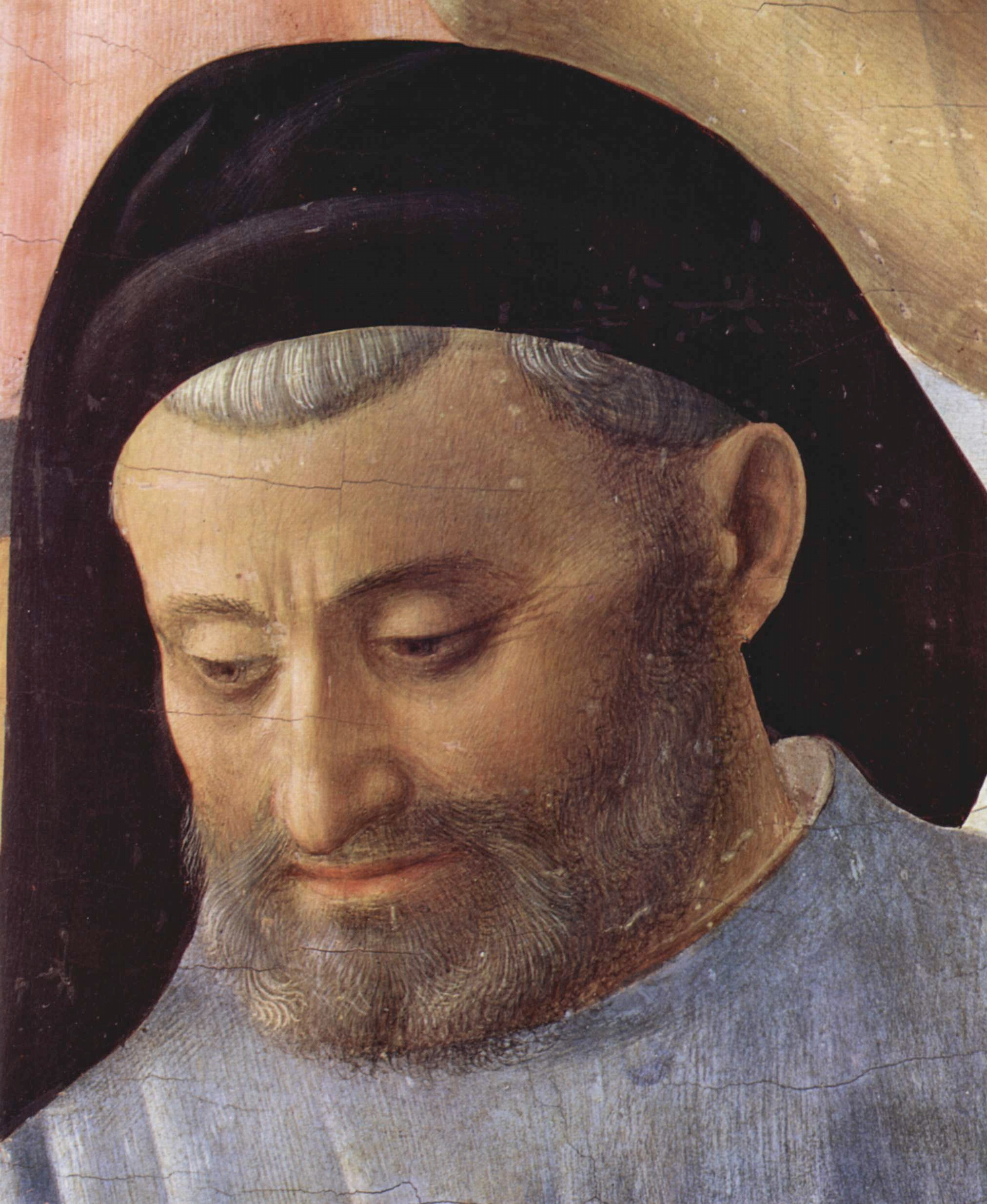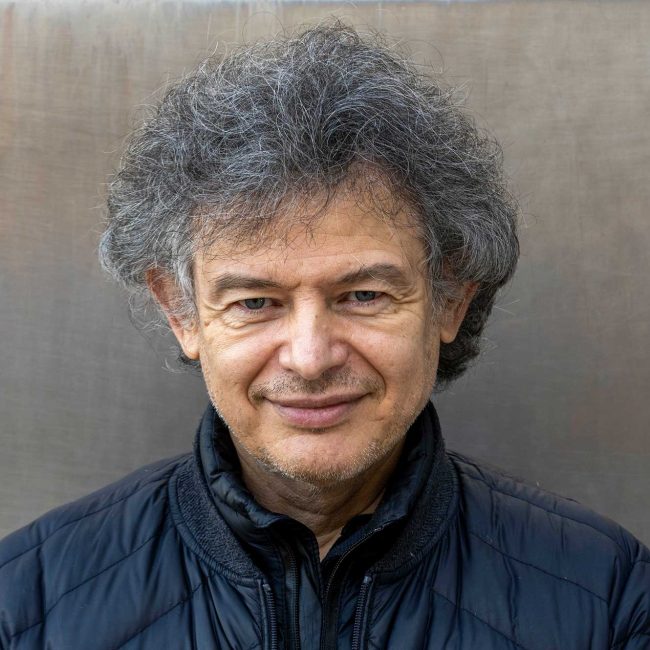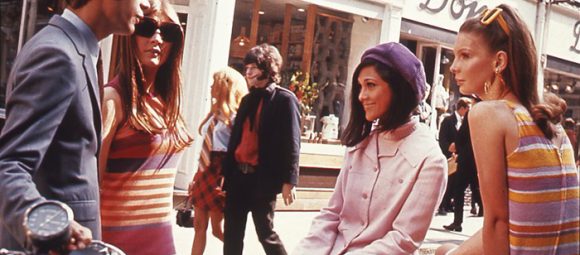Fra Angelico: The Painter of Light and Silence
Few names in art history are spoken with such reverence as that of Fra Angelico (c. 1395–1455), the Dominican friar who transformed early Renaissance painting with a sense of spiritual clarity, light, and silence that continues to resonate six centuries later.
A Pioneer of the Renaissance
Born Guido di Pietro in Vicchio near Florence, Fra Angelico entered the Dominican order around 1418.
Upon taking his vows, he adopted the name Fra Giovanni da Fiesole (Fiesole being a nearby hill town), but over time he was more commonly known by his honorific Fra Angelico (“the Angelic Brother”).

This face in the “Deposition of Christ” is thought to be a self portrait of Fra Angelico.
- The prefix Fra means “brother,” signifying his status as a friar (a Dominican), not a secular painter. His identity as a man of faith was intrinsic to his art.
- The epithet Angelico (literally “angelic”) was not one he assigned by himself; it was given as a tribute to the quality of his work. Giorgio Vasari, in his Lives of the Artists, praises him as “a rare and perfect talent” whose works seemed to transcend ordinary painting. Over time, the name stuck—and today we rarely refer to him as Guido di Pietro.
- In 1982 Pope John Paul II beatified him (he is often called “Beato Angelico”), underscoring how his reputation straddles both the worlds of art and spirituality.
His vocation as a friar defined his work: art was not for vanity but for devotion, a form of prayer rendered in color and form. Unlike many of his contemporaries, Angelico’s style was not dominated by worldly splendor but by an extraordinary serenity and balance.
Art historians often credit him with bridging the Gothic tradition and the new naturalism of the Renaissance. His paintings—filled with luminous color, refined figures, and delicate perspective—made him one of the key artists who shaped the transition to a more human-centered vision of faith and beauty.
Key Works
- The Annunciation (c. 1438–1447) at the Convent of San Marco in Florence, perhaps his most famous fresco, embodies Angelico’s genius. The scene is pared down to essential elements: Mary, the Angel, an arcade of light-filled columns, and silence that feels divine.
- The San Marco Frescoes in Florence, painted for the cells of the Dominican friars, remain among the most profound spiritual cycles of Renaissance art. Each cell was decorated with a scene for meditation—simple, quiet, yet endlessly deep.
- The Last Judgment (c. 1431) in the Museo di San Marco and The Coronation of the Virgin (c. 1434–35) now in the Louvre, Paris, both reveal his skill in combining spiritual transcendence with vivid, almost jewel-like detail.
The Florence Exhibition 2025–2026: Two Venues, One Vision
From 26 September 2025 to 25 January 2026, Florence hosts a grand retrospective, titled “Fra Angelico” presented in two venues: Palazzo Strozzi and the Museo di San Marco.
- At Palazzo Strozzi, the exhibition is open daily 10:00–20:00 (Thursdays until 23:00).
- The Museo di San Marco portion of the exhibition runs in its usual opening hours (the morning) and showcases not only transferred works but also the fresco environment in situ.
- This is the first major retrospective of Fra Angelico in Florence in over 70 years.
- The show brings together altarpieces that have been dispersed for centuries and includes works newly restored or reassembled through conservators’ detective work.
- It also frames Angelico in conversation with contemporaries—Masaccio, Lorenzo Monaco, Filippo Lippi—and sculptors like Ghiberti, Michelozzo, and Della Robbia.
Thus the dual-venue format is not a split show but a composite: Palazzo Strozzi offers a more conventional museum exhibition with major loans and thematic rooms, while San Marco roots the show in its original spiritual and architectural context, allowing visitors to experience some of the frescoes in situ and sense how Angelico’s art was part of a living monastic environment.
Fra Angelico and José Manuel Ballester: A Contemporary Dialogue
The dialogue with Fra Angelico continues into the present. Contemporary Spanish artist and photographer José Manuel Ballester, a close friend of ANNO Media, is widely known for his series Espacios Ocultos (Hidden Spaces), in which he digitally removes human figures from iconic works of art to reveal their underlying architecture and atmosphere.

Jose Manuel Ballester
One of the very first works Ballester reinterpreted in this way was Fra Angelico’s Annunciation. By emptying the fresco of its sacred figures, he exposed the cloistered space itself—the colonnade, the shadows, the silence—allowing viewers to feel the weight of absence and the architecture of faith.
Ballester’s act was not one of erasure but of homage. It revealed the structural and compositional genius of Angelico while inviting a new meditation on presence and absence, on what is seen and unseen.

Site for the Annunciation (2007) By Jose Manuel Ballester
Why Fra Angelico Still Matters
Fra Angelico’s legacy lies not only in his role as a master of Renaissance art but in his ability to connect painting with spirituality. His art is timeless because it speaks in whispers rather than shouts. In a world often overwhelmed by noise and spectacle, Angelico’s frescoes remind us of the power of silence, grace, and light.
As the Florence exhibition shows—and as artists like José Manuel Ballester remind us—Fra Angelico’s vision is not confined to the 15th century. His spaces, painted in devotion, remain alive, open, and ready for contemplation in our own time.



